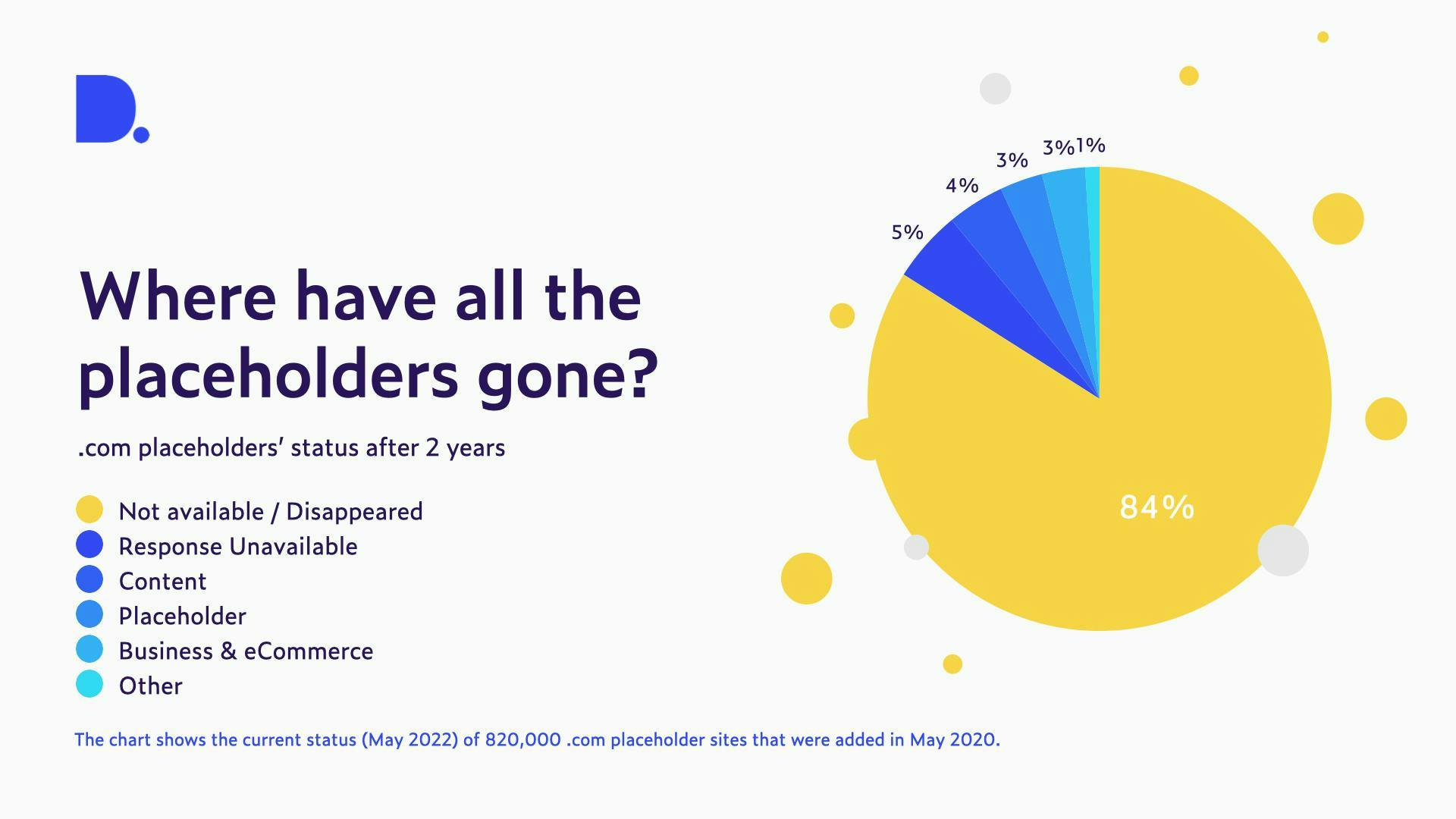Where have all the placeholders gone?
- over 3 years ago
- 2 min read
Placeholders are temporary web pages that are generated by the hosting company or registrar of the domain. A placeholder usually indicates that a permanent website is being created. But how many placeholders actually convert to a permanent site?
When talking about the web, many people forget that not every domain has a website. There are many registered domains that do not have an associated website. One such example is redirection, when you type a domain name into your browser and it then automatically sends you to another domain (e.g. Nike.de redirects to Nike.com). Another example is domain parking, meaning the domain is not in use for a website or email but it can contain ads, in that case it is referred to as monetized parking.
Here, we are taking a closer look at placeholders. We use the following definition as per our Data Dictionary:
"Placeholder refers to the temporary default homepage generated by the hosting company of the website. Such a placeholder usually indicates that a permanent website is being created. Our spider detects default placeholder pages of all major registrars, as well as customized placeholders that use a default text."
So a lot of domains get registered, but how many of the ones that have a placeholder, are turned into a website?
To answer this question we analyzed around 820,000 .com placeholder sites that were added in May 2020. We then look at their status two years later in May 2022. So what happened to these placeholders?
A staggering 84% of placeholders don’t exist anymore, 5% redirect, can’t be found or denied access, 3% remained a placeholder, only a small proportion converted into a site with individualized content (5%) or a business site (3%).
This high attrition rate suggests that the vast majority of domains that get registered are not renewed after two years and simply disappear.
